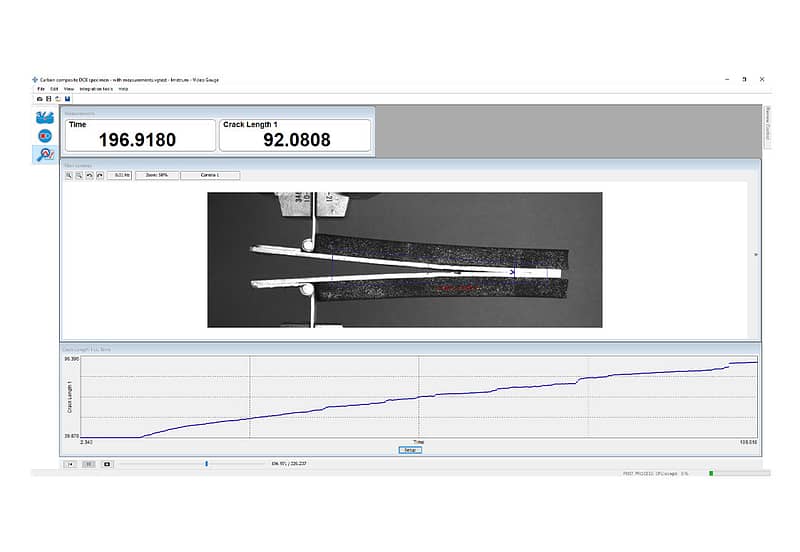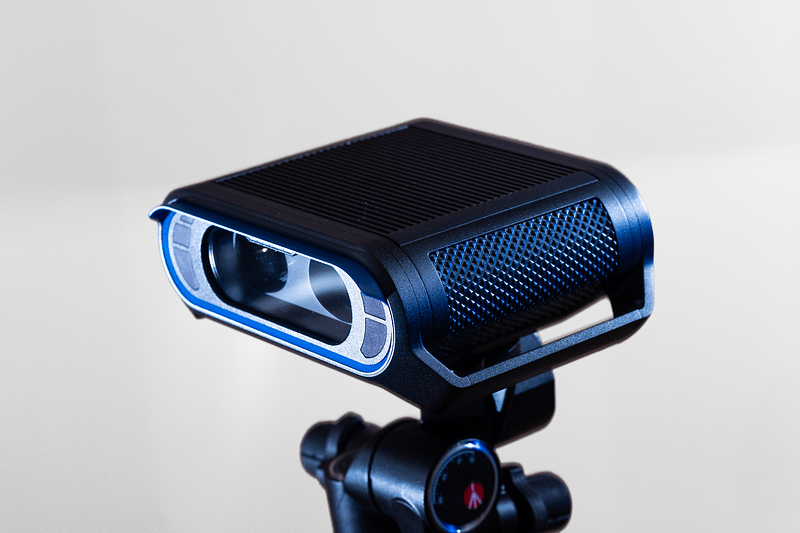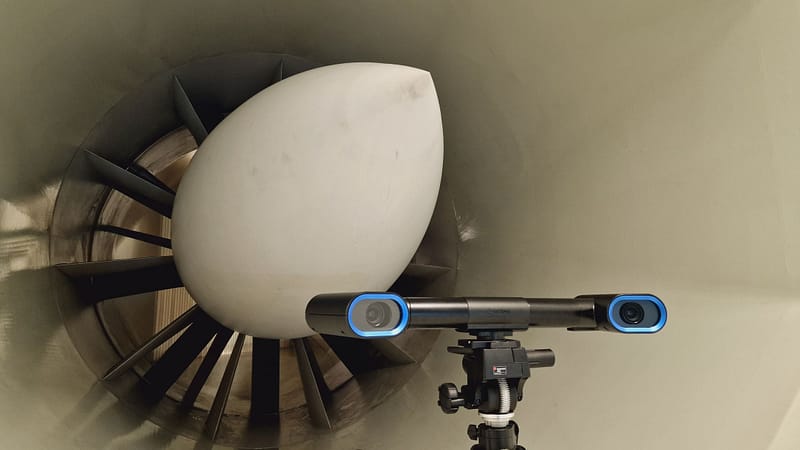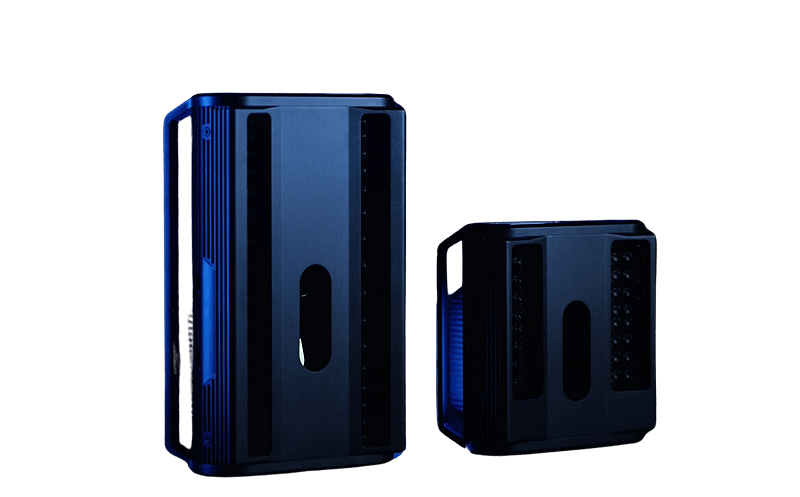As a video-based system, Video Gauge™ offers a wide range of virtual measurement tools in a single piece of software. You can use tools for strain, displacement, distance, rotation, shear strain, crack length, LVDT, and more. You can configure any number of these tools to measure any point on the test object.

Video Gauge™ not only captures measurement data live but also reanalyses previously captured tests. This key advantage of a video-based measurement systems allows you to gain additional insights from the captured video data. Conventionally, you would need to rerun tests to obtain this extra information. In Post Processing mode, you can reanalyse video data on any computer and add any number of measurement tools.

Video Gauge™ offers a wide variety of tools and features. While several features are developed specifically for wind tunnel testing, they apply to a wide range of applications. These include Rigid Body Motion correction, which compensates for movements of the test object to extract real motion. Additionally, you can combine the coordinate systems of multiple tools to perform measurements on large test objects or from different viewpoints.

Video Gauge™ also provides a Digital Image Correlation tool for creating rich color contour maps over the test object. These maps, which can show strain or displacement, offer a detailed understanding of the entire surface. For example, you can identify and measure strain concentrations specifically.

If you are interested in obtaining a quote or looking for additional information, please fill out the form.
"*" indicates required fields

Designed for Kinematics & Compliance testing
Integration with new and existing test rigs
Scalable for full vehicle testing

Designed for wind tunnel testing
Integration with wind tunnel control system
Fully tailored solution for individual needs.

UVX3D offers higher frame rates and advanced strain rate control capabilities
Consistent performance across a wide range of testing environments
Digital Image Correlation strain and displacement maps are also available
Imetrum Limited, The Courtyard, Wraxall Hill, Wraxall, Bristol, BS48 1NA, United Kingdom
Built by
in Bristol
We need your consent before you can continue on our website. If you are under 16 and wish to give consent to optional services, you must ask your legal guardians for permission. We use cookies and other technologies on our website. Some of them are essential, while others help us to improve this website and your experience. Personal data may be processed (e.g. IP addresses), for example for personalized ads and content or ad and content measurement. You can find more information about the use of your data in our privacy policy. You can revoke or adjust your selection at any time under Settings.
If you are under 16 and wish to give consent to optional services, you must ask your legal guardians for permission. We use cookies and other technologies on our website. Some of them are essential, while others help us to improve this website and your experience. Personal data may be processed (e.g. IP addresses), for example for personalized ads and content or ad and content measurement. You can find more information about the use of your data in our privacy policy. Here you will find an overview of all cookies used. You can give your consent to whole categories or display further information and select certain cookies.